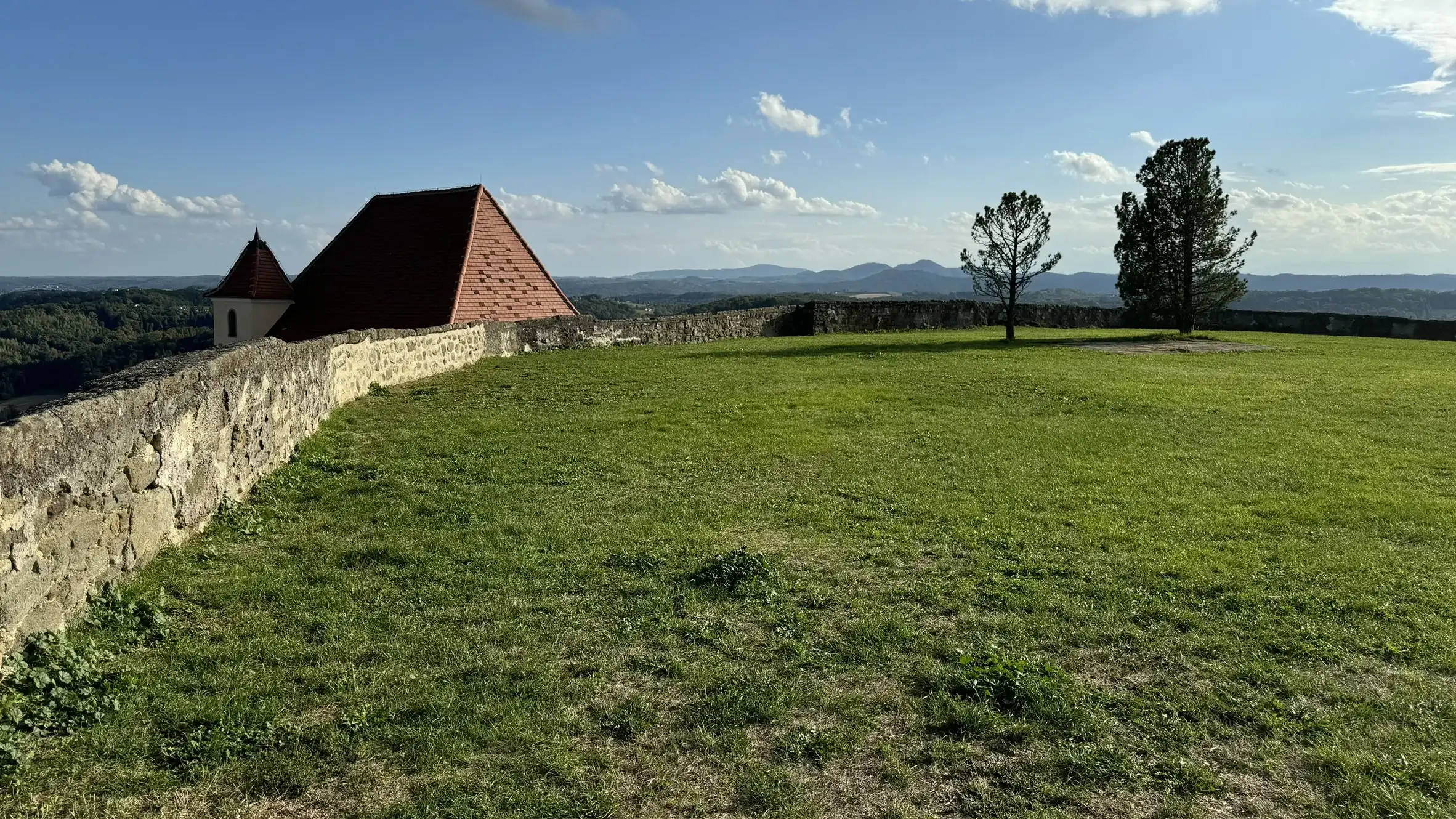Lichtenegg Castle
There was once a second castle perched on a steep rock, within this ring wall.
The former lower castle, mentioned in documents as “Niedere Veste“, but popularly referred to as “Lichtenegg Castle“, is believed to have been founded by a regional prince.
The first fortified building on this site was probably erected in the 12th century by the ruling lords of Styria, the Traungau dynasty. In 1316, the Walseer family, who were the lords of the main castle at that time, acquired the Niedere Veste.
During the so-called “Walseer Feud“, a military conflict between two branches of the Habsburg family in 1412, the Niedere Veste was confiscated by the Styrian Duke, Ernst the Iron. As a result, the situation of the main castle became hopeless and it too had to be surrendered to the Duke. It was not until 1417 that the Walseers regained their two castles. This is the only historically documented (although internal) conquest of Riegersburg Castle.
Far better known is the legend of the two feuding brothers of Riegersburg, which is elaborated upon in the castle museum.
In the late 15th century, Burg Lichtenegg was abandoned and fell into ruin.
In the 16th century, Hans von Stadl planned to rebuild the Niedere Veste as a residential castle for his younger son, Georg. However, Georg’s early death and the turmoil of the Reformation thwarted this plan.
In the 17th century, a riding stable was built from the ruins of the Niedere Veste under the “Gallerin”.
In 1823, the last remains of the riding stable were removed and the stones were used for restoration work elsewhere.
In 1959, the so-called Borderland Memorial was erected on the plateau, to remind us of the dreadful time of World War II. This memorial existed until 2021.


